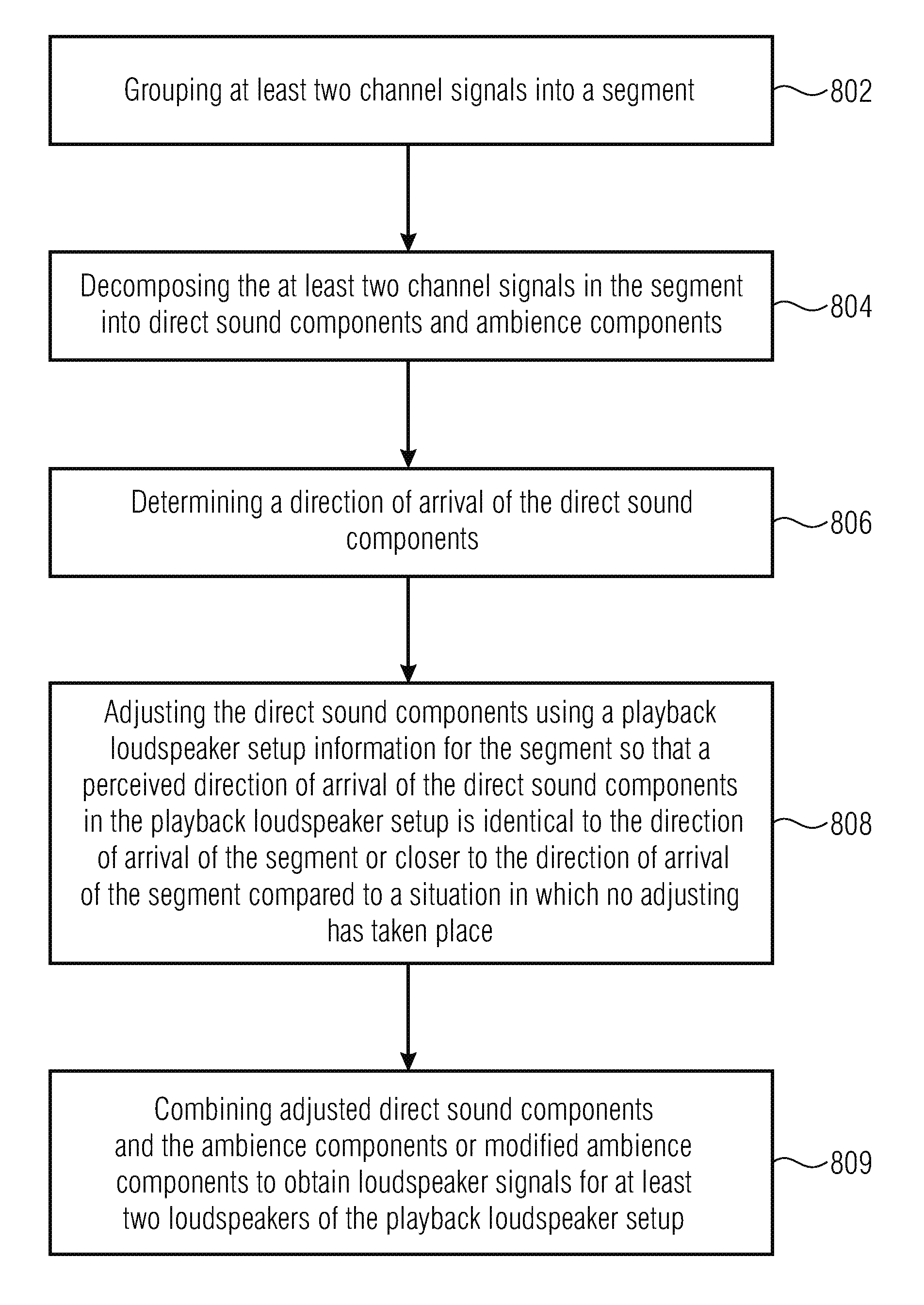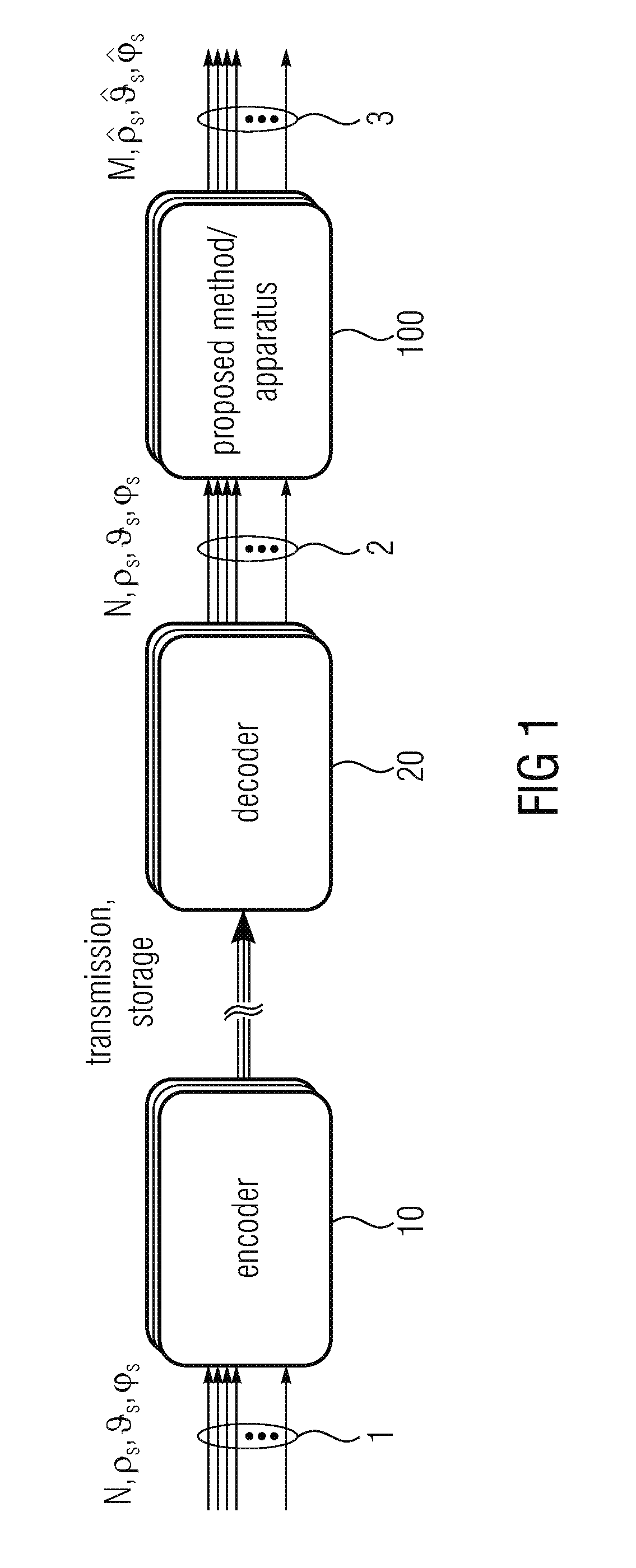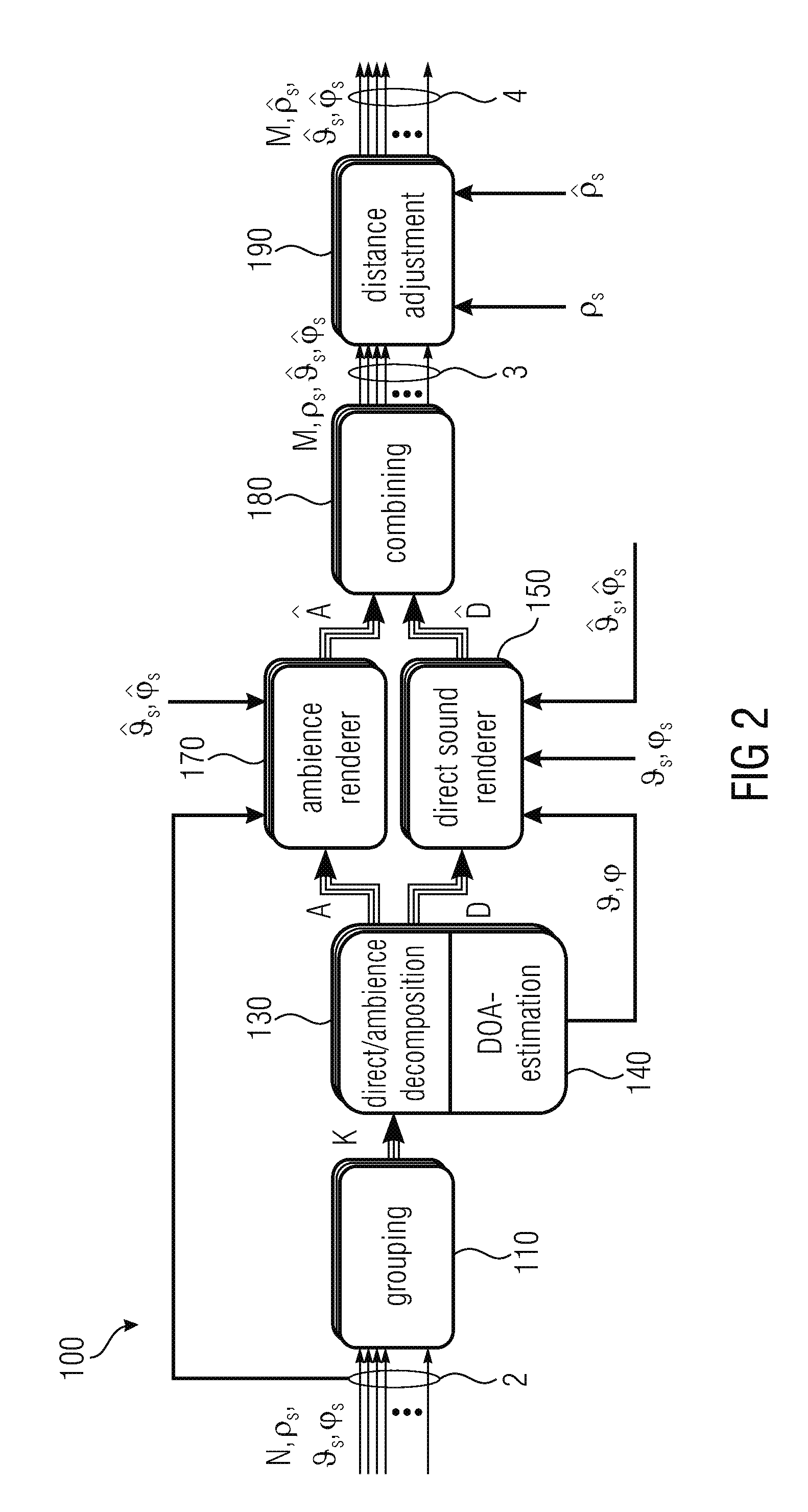Segment-wise adjustment of spatial audio signal to different playback loudspeaker setup
a loudspeaker and spatial audio technology, applied in the field of modern audio playback system, can solve the problems of spatial quality, no general compatibility between all these systems, and decrease the spatial audio experience of listeners
- Summary
- Abstract
- Description
- Claims
- Application Information
AI Technical Summary
Benefits of technology
Problems solved by technology
Method used
Image
Examples
Embodiment Construction
[0034]Before discussing the present invention in further detail using the drawings, it is pointed out that in the figures identical elements, elements having the same function or the same effect are provided with the same or similar reference numerals so that the description of these elements and the functionality thereof illustrated in the different embodiments is mutually exchangeable or may be applied to one another in the different embodiments.
[0035]Some methods for adjusting a spatial audio signal are not flexible enough to handle a complex sound scene, especially those which are based on global physical assumptions (see e.g., V. Pulkki, “Spatial Sound Reproduction with Directional Audio Coding”, J. Audio Eng. Soc, vol. 55, no. 6, pp. 503-516, 2007 and V. Pulkki and J. Herre, “Method and Apparatus for Conversion Between Multi-Channel Audio Formats”, US Patent Application Publication No. US 2008 / 0232616 A1) or which are restricted to one locatable (direct) component per frequenc...
PUM
 Login to View More
Login to View More Abstract
Description
Claims
Application Information
 Login to View More
Login to View More - R&D
- Intellectual Property
- Life Sciences
- Materials
- Tech Scout
- Unparalleled Data Quality
- Higher Quality Content
- 60% Fewer Hallucinations
Browse by: Latest US Patents, China's latest patents, Technical Efficacy Thesaurus, Application Domain, Technology Topic, Popular Technical Reports.
© 2025 PatSnap. All rights reserved.Legal|Privacy policy|Modern Slavery Act Transparency Statement|Sitemap|About US| Contact US: help@patsnap.com



